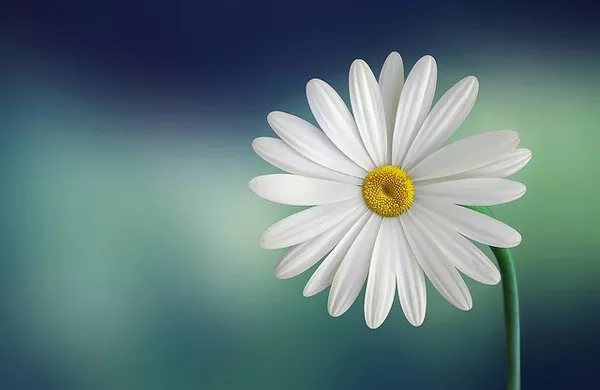Flowers have long captivated humanity with their beauty, but beyond their aesthetic appeal lies a tapestry of symbolism and meaning. Among these floral ambassadors, the daisy holds a special place, revered for its simplicity yet rich in significance. From ancient mythology to modern-day expressions, the daisy’s message resonates across cultures and epochs. In this exploration, we delve deep into the layers of symbolism that adorn the daisy, revealing its profound meaning and enduring allure.
The Origins of Daisy Symbolism
To understand the significance of the daisy, we must embark on a journey through history, tracing its roots back to ancient civilizations where symbolism was woven into the fabric of daily life. The daisy, with its pristine white petals radiating from a golden center, emerged as a potent symbol of purity, innocence, and new beginnings.
In Greco-Roman mythology, the daisy was associated with the goddess Aphrodite (Venus in Roman mythology), the embodiment of love and beauty. According to legend, the daisy sprung from the tears of the nymph Belides as she wept for her lost love. This association with love and fertility persisted through the ages, making the daisy a favored flower in ceremonies celebrating marriage and childbirth.
The Language of Flowers: Daisy’s Communicative Power
During the Victorian era, a period marked by strict social etiquette and coded communication, flowers became a means of conveying emotions and sentiments that were otherwise unspeakable. This phenomenon, known as floriography or the language of flowers, elevated the daisy to new heights of significance.
In the language of flowers, the daisy symbolized innocence and loyal love. Its delicate petals spoke of purity and simplicity, while its resilient nature conveyed enduring affection. It was a favorite bloom in romantic bouquets, where each flower carried a hidden message, allowing lovers to express their feelings covertly in an era of strict social norms.
Cultural Significance Across the Globe
Beyond its European origins, the daisy’s symbolism reverberates across diverse cultures worldwide. In China, the daisy represents purity, modesty, and motherhood, revered for its ability to thrive in adverse conditions, much like the virtues it embodies. In Japan, the daisy, known as “hinagiku,” is celebrated during the annual Hinamatsuri festival, where it symbolizes purity and renewal, adorning homes and temples in vibrant displays.
In Native American traditions, the daisy’s white petals symbolize the purity of the soul, while its golden center represents the life-giving sun, a source of warmth and vitality. Among indigenous peoples of North America, the daisy holds ceremonial significance, used in rituals to invoke blessings and protection.
Literary and Artistic Inspiration
The daisy’s timeless appeal extends beyond the realms of mythology and cultural symbolism, permeating literature, art, and popular culture. From William Wordsworth’s romantic verses to Shakespeare’s poetic musings, the daisy has inspired countless writers and poets with its ethereal beauty and profound symbolism.
In art, the daisy has been immortalized by masters such as Vincent van Gogh, who captured its delicate allure in vibrant brushstrokes, and Georgia O’Keeffe, who rendered its form with bold simplicity, exploring themes of femininity and nature.
Modern Interpretations: Daisy in Contemporary Culture
In the modern era, the daisy continues to exert its charm, transcending time and space to inspire a new generation of artists, designers, and creatives. Its timeless appeal has made it a ubiquitous motif in fashion, interior design, and graphic arts, symbolizing youthfulness, purity, and optimism.
In popular culture, the daisy has been embraced as a symbol of empowerment and individuality, epitomized by the iconic Daisy Duke character from the television series “The Dukes of Hazzard.” Its association with the free-spirited ethos of the 1960s flower power movement endures, symbolizing peace, love, and harmony.
Environmental and Medicinal Significance
Beyond its symbolic significance, the daisy holds practical value in fields ranging from horticulture to herbal medicine. As a hardy perennial, it thrives in diverse climates, making it a popular choice for gardeners seeking low-maintenance blooms. Its cheerful demeanor and ability to naturalize make it a welcome addition to meadows, gardens, and landscapes worldwide.
In traditional herbal medicine, the daisy has been esteemed for its medicinal properties, with practitioners harnessing its anti-inflammatory and antimicrobial properties to treat a variety of ailments. From soothing skin irritations to easing digestive discomfort, the daisy’s therapeutic potential continues to be explored in modern herbalism.
Conclusion
In conclusion, the daisy transcends its humble appearance to embody a wealth of symbolism and significance that resonates across cultures, epochs, and disciplines. From ancient mythology to contemporary culture, its message of purity, innocence, and resilience endures, making it a beloved emblem of beauty and hope in an ever-changing world. Whether adorning a bridal bouquet, gracing a piece of artwork, or blooming in a roadside meadow, the daisy remains a timeless symbol of nature’s enduring grace and the human spirit’s indomitable resilience.

